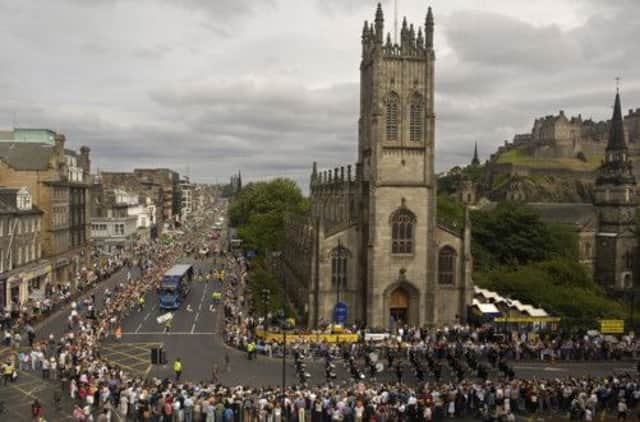Edinburgh is the perfect backdrop for a festival


“The Edinburgh Festival may be a great arts festival. But where is the art?” ran the headline, and the author went on to demand “a call to arms... a committee must be formed, under an independent chairperson, with representatives from all the key parties”.
A committee was formed, and in 2004 the first Edinburgh Art Festival launched. The youngest of Edinburgh’s 12 official festivals, this August we celebrate our tenth edition, and with over 50 exhibitions in venues across the city, we can say with confidence that visual art is now firmly enshrined as a central pillar of Edinburgh’s summer festival offering.
Advertisement
Hide AdAdvertisement
Hide AdIn the face of an ever-expanding directory of art fairs, biennials and triennials, it is perhaps not surprising that we are often asked: “Why another visual art festival?” Or indeed: “What is different about your festival?”
The city that gave birth to the Enlightenment
Of course, the context in which we operate is second to none – a festival dedicated to the very best visual art taking place alongside the prestigious International Festival, the world’s largest performing arts festival in the Fringe and a major book festival. But what marks us out above all is the city itself. Edinburgh is rightly renowned around the world as the city that gave birth to the Enlightenment, and an officially designated “city of literature”. But the experience of the city (as any visitor will attest) is also a profoundly visual one. What Hugh MacDiarmid called a “mad god’s dream” would not look out of place in the visual worlds of Piranesi or Escher.
Our unique architectural heritage has rightly earned the city a place on the World Heritage register, and we sit on a list which includes such spectacular archaeological remains as the Great Wall of China, Pompeii and the Athenian Acropolis. The tension or irony of course is that unlike Pompeii or the Parthenon, Edinburgh is a living breathing city, a fully functioning (some days more than others) modern capital.
It is this unique context which the Art Festival is increasingly engaging with, in a programme of publicly sited works which invite contemporary artists to develop a direct conversation with the city. This has resulted in several permanent physical legacies to the city. Martin Creed’s Work No 1059 commissioned by the Fruitmarket Gallery for the Art Festival in 2011 has seen the Scotsman Steps reclaimed for the contemporary city, transformed from an adhoc urinal into a global stairway. Or Callum Innes’s lighting piece for the Regent Bridge – a work which in its deliberately random bold juxtaposition of colours, of light and shade, is the living descendant of a city which gave birth to Jekyll and Hyde; and Confessions of a Justified Sinner.
Sing your complaints out loud
This year’s commissions for the Art Festival will continue to engage the city in direct conversation and dialogue – not least in a series of works which depend directly on the city’s residents for their creation. The Edinburgh Complaints Choir invites people to sing their complaints out loud – over 40 people at the time of writing have signed up, and The Scotsman’s own Brian Ferguson has taken to composing his own lyrics; while Peter Liversidge’s Flags for Edinburgh has invited institutions across the length and breadth of the city, to fly a special flag for the duration of the festival.
Festivals are and have always been profoundly (re)generative, playing a crucial role in society by providing an outlet to explore difficult ideas, a shared opportunity to test boundaries, to consider being human (with all the complex emotions that involves). The great masterpieces of Greek tragedy were all specifically written for festival contexts. Modern day festivals are no less vital. Like ancient rituals, they offer a chance to be different, to play with new ideas, to see ourselves and our cities in new ways. They represent the supreme opportunity for art and the public to collide.
This peculiar alchemy that festivals effect has always been pronounced in Edinburgh. Writing about her own DIY film festival which she ran in the 1950s in Rose Street, the celebrated film-maker Margaret Tait highlighted the transformative effect of the Edinburgh Festival on visitor and resident alike: “Because the one thing that is exceptional about the Edinburgh Festival is the public. The operas, the plays, the musical pieces performed might occur in any average week in London or New York. Not so the public… for those three weeks in the year all the citizens of Edinburgh too become art-lovers, opera-mad, crazy about theatre, music and film.”
That intersection of art, the public and the city remains as critical to festivals today as it was 50 years, or indeed 2,500 years ago when Aeschylus, Sophocles and Euripides were all composing new work for another great festival city, the Athens of the South.
• Sorcha Carey is director of the Edinburgh Art Festival